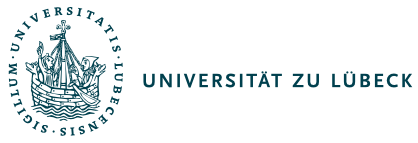Duration:
1 Semester | Turnus of offer:
each winter semester | Credit points:
3 |
Course of studies, specific field and terms: - Master CLS 2023 (Module part of a compulsory module), MML with specialization in Life Science, 3rd semester
- Master MLS 2018 (Module part of a compulsory module), structure biology, 1st semester
- Master Infection Biology 2018 (Module part of a compulsory module), Interdisciplinary modules, 1st semester
- Master Biophysics 2019 (Module part of a compulsory module), biophysics, 1st semester
- Master CLS 2016 (Module part of a compulsory module), MML with specialization in Life Science, 3rd semester
- Master MLS 2016 (Module part of a compulsory module), structure biology, 1st semester
- Master Infection Biology 2012 (Module part of a compulsory module), Interdisciplinary modules, 1st semester
- Master CLS 2010 (module part), computational life science / life sciences, 3rd semester
|
Classes and lectures: - LS4027-V Optical Methods (lecture, 2 SWS)
| Workload: - 30 Hours in-classroom work
- 60 Hours private studies
| |
Contents of teaching: | - Basic principles of optics
- Light sources and detectors
- Classical light microscopy
- Photophysics, fluorescence microscopy
- Confocal microscopy
- Nonlinear microscopy
- Fluorescent dyes; GFP and genetically encoded fluorescent markers; live cell/intravital imaging: important experimental parameters
- Protein-protein interactions in living cells: FRET, FLIM; biosensors
- Photoactivatable/switchable fluorescent proteins; fluorescent timers
- Optogenetics: Cell manipulation by light
- Super-resolution 3D fluorescence microscopy: STED, PALM, STORM
- Optical tweezers as instrument for nanomanipulation
- Visualization and quantitative evaluation; data format and data storage media
- In vivo imaging in tissues and living animals
- Bioluminescence and optoacoustic imaging
- Flow cytometry & fluorescence activated cell sorting
- High-content screening; optical sensor technology
- Technologies under development
| |
Qualification-goals/Competencies: - Students acquire professional competence in basic principles and concepts of optics.
- Students know the basics of light and fluorescence microscopy.
- They know and understand the most important methods for marking and microscopic visualization of proteins and sub-cellular structures.
- Students know the possible applications of live cell microscopy, intravital imaging, and quantitative fluorescence techniques in biological questions.
- They know basic techniques of 3-dimensional optical imaging of tissues and animals.
- Student are familiar with current research topics in the field of optical methods in the life sciences and are able to evaluate them in terms of their application maturity and potential.
- Students can classify optical methods according to their complexity and outline possible applications.
- The students have the social and communication skills to discuss given questions within group work for lecture preparation and lecture follow-up.
|
Grading through: |
Responsible for this module: Teachers: |
Literature: - J. B. Pawley, ed.: Handbook of Biological Confocal Microscopy, Springer
- V. V. Tučin: Handbook of optical biomedical diagnostics, SPIE Press
- L. V. Wang, and H.-i. Wu: Biomedical optics principles and imaging, Wiley
- :
- :
- :
|
Language: |
Notes:Is module part of:
- LS4021-KP06 (former LS4020-IB) -> Prof. Hübner
- LS4020-KP06 (former LS4020-MLS) and LS4020-KP12 -> Prof. Peters
- LS4026-KP06 start 2023
(Share of Institute of Biomedical Optics to this lecture is 100%) |
Letzte Änderung: 23.9.2024 |



















für die Ukraine